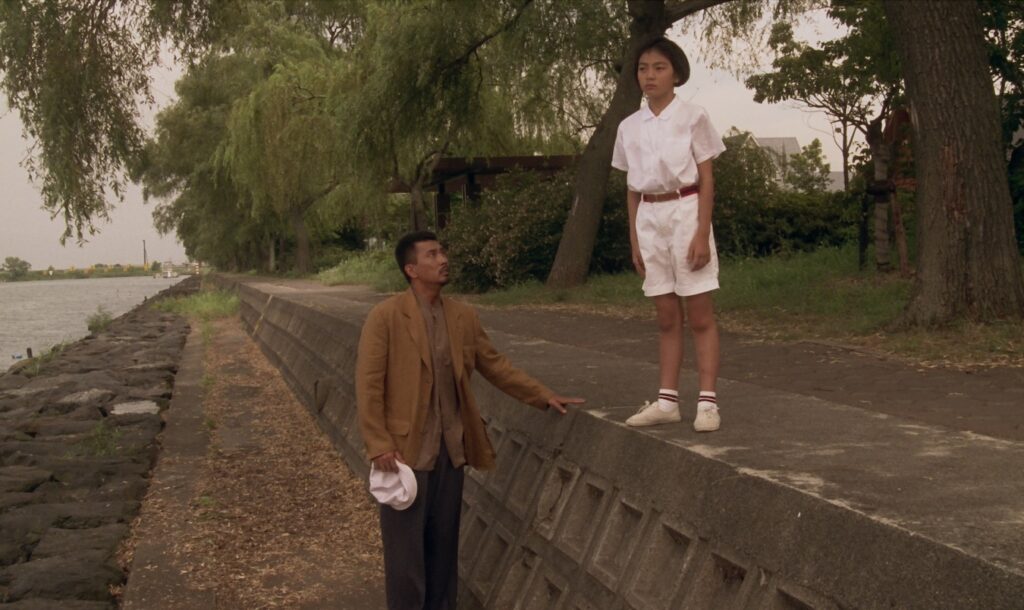With ‘Moving’ Playing at Two New York City Showcases This Summer, Recognition of Its Director Is Spreading
Shinji Sōmai’s ‘Moving’ is a film of almost uncanny naturalism. Sōmai disappears behind a scrim of events and characters, of everyday situations marked by remarkable authenticity.

The films of Japanese director Shinji Sōmai (1948-2001) are starting to garner the international recognition that eluded him during his lifetime. Last year saw the restoration and re-release of what many consider his best film, “Typhoon Club” (1985). This summer, the Japan Society showcased Sōmai’s “Moving” (1993) as part of its annual round-up of films, “Japan Cuts 2024.” Film at Lincoln Center is picking up the ball by hosting the movie for an extended run.
Over the course of 13 films, Sōmai worked in different genres — even helming an example of a peculiar strain of Japanese erotica, the so-called Roman Porno films. Yet he is best known for movies concentrating on the lives and travails of adolescents. Did this particular emphasis help shape Sōmai’s signature cinematic attribute, the long-take? Assistant director Koji Enokido noted that “with children especially, it was all about moving around, because it would be quite stiff for them to just stand and deliver their lines.” The longer the camera lingered, the more organic the scenario.
“Moving” is a film of almost uncanny naturalism. Sōmai disappears behind a scrim of events and characters, of everyday situations marked by remarkable authenticity. Comparisons to the pictures of Yasujirō Ozu are inevitable, but, in the end, don’t pan out.
Although both filmmakers dealt with similar themes — the complications of family being a mainstay — Sōmai is less overtly formal. Scenes play out with a cadence that seems unfeigned and is sometimes brutal in intimacy. Settings play a vital role — in “Typhoon Club” it was a school; here, a comfortable middle-class home — yet they remain, if not ancillary, then understated.
At the center of “Moving” is an indelible performance by Tomoko Tabata, then a 13-year-old, as Renko, a precocious girl whose parents are getting a divorce. Ms. Tabata not only plays a character who is wise beyond her years, but who also has a preternatural sense of her place in the universe. The title of the film not only references the relocation of Renko’s father, Kenichi (Kiichi Nakai), but Renko’s mode of dealing with untenable situations: running. She’s spritely, our young heroine, and possessed of a rare tenacity. Once Renko begins moving, good luck catching up with her.

We first meet the Urushibas around the family dinner table — a sharply triangular piece of furniture that accrues symbolic portent over the course of the proceedings. Renko is perceptive, chatty, and not schooled in the ways of filtering her comments. Kenichi is quiet, as is his soon-to-be ex-wife, Nazuna (Junko Sakurada). Their separation is under discussion, but only obliquely. Renko intuits the gravity of the situation without quite understanding how dramatically life will change.
There is considerable tumult on Renko’s part. In a bravura scene, she locks herself in the bathroom in a fit of pique with Nazuna. After pleading with Renko for hours, mom breaks down and calls Kenichi, his sister Mariko (Wakako Takano), and her boyfriend Yukio (Taro Tanaka).
Renko’s intransigence continues. Tensions build among the adults. Sōmai employs the narrow hallway in which the adults are ensconced as a pressure cooker for long-standing grudges and buried emotions. The moment is brought to resolution through a moment of high drama that leaves the participants bloodied. Emotional resolution is further away than ever. This is bravura filmmaking that points to why Sōmai is held in high esteem by a subsequent generation of writers and directors.
Alas, bravura filmmaking of another sort takes precedence during the final 30 minutes. Renko’s adventures take on an operatic, otherworldly cast. Here is where Sōmai the naturalist is defeated by Sōmai the symbolist. As beautiful as the final section of the picture might be — all props to cinematographer Toyomichi Kurita — it breaks the spell by displacing the audience’s investment with the director’s guile.
Showing off does not make for convincing fiction. Still and all, “Moving” leaves a distinctive enough glow to make us forgive Sōmai for his indulgences.

